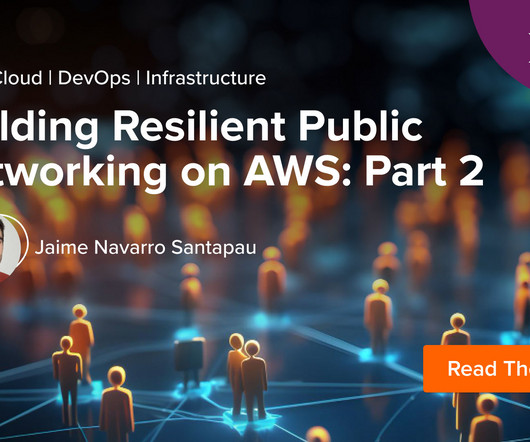Building Resilient Public Networking on AWS: Part 2
Xebia
JANUARY 18, 2024
Region Evacuation with DNS approach: At this point, we will deploy the previous web server infrastructure in several regions, and then we will start reviewing the DNS-based approach to regional evacuation, leveraging the power of AWS Route 53. We’ll study the advantages and limitations associated with this technique.


















Let's personalize your content